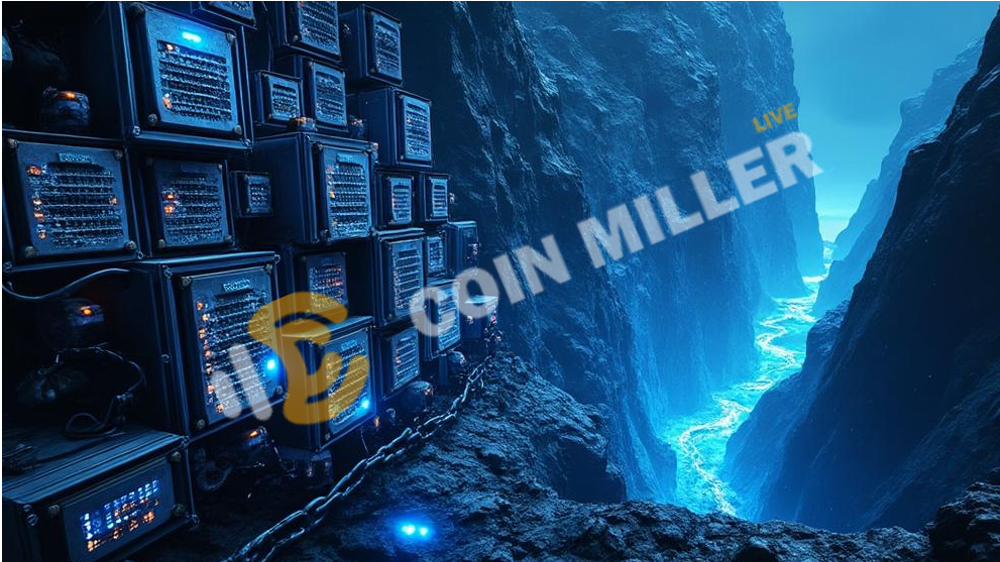Network Growth and Financial Shifts
Bitcoin mining reached a significant milestone in September when the network averaged 1.034 zetahashes per second, marking the first time it crossed the zetahash threshold. This growth came with some economic pressure though – hashprice fell below $47 per petahash per second during the same period.
According to recent analysis, this increase in network difficulty coincided with miners’ equity values nearly doubling since August, reaching approximately $90 billion by October 15. Interestingly, this equity growth happened while Bitcoin’s price actually declined by 3.7 percent over the same timeframe.
The mining sector appears to be undergoing a fundamental shift in its financial structure. The focus has moved toward balance sheet capacity, convertible debt instruments, and high-performance computing contracts. Record difficulty levels have been squeezing operating margins, while power costs have remained relatively stable near fixed-rate agreements.
Economic Realities at the Rig Level
The economics at the individual mining rig level provide crucial context for understanding the broader industry dynamics. Using a base case scenario with power costs at $0.06 per kWh, revenue currently runs near $0.054 per terahash per day. This translates to payback periods ranging from roughly 458 days for the most efficient S19XP+ Hyd models to about 900 days for S23 Hyd units across various efficiency bands.
This wide range in payback periods highlights the growing gap between mining fleets operating on the latest-generation equipment curve and those using older, less efficient hardware. The sensitivity analysis suggests that a 10 percent change in revenue per terahash per day moves payback periods by roughly 10 to 15 percent, primarily because operational expenses tied to energy consumption dominate while capital expenditure per terahash remains fixed in the near term.
This sensitivity makes network difficulty and Bitcoin’s price trajectory the primary variables that will determine mining profitability going forward. There’s some potential relief flagged for the next difficulty adjustment – possibly around four percent – but this is likely to be temporary given the network’s growth trajectory.
Operational Challenges and Strategic Shifts
Operating in the zetahash regime raises the bar significantly for power procurement, curtailment strategies, and efficiency upgrades. Miners without access to sub-$0.05 per kWh power or sufficient latest-generation equipment face compressed margins until either Bitcoin reprices higher or sustained difficulty relief arrives.
The analysis outlines three potential near-term scenarios. If difficulty continues grinding higher while Bitcoin remains flat, hashprice could drift 10 to 20 percent lower, extending payback periods by two to six months for common air-cooled mining fleets. If the anticipated difficulty relief arrives with only a modest Bitcoin price bounce, operators might see a five to ten percent tailwind that quickly fades. The most favorable scenario involves Bitcoin rerating higher while difficulty remains flat, which could provide a 15 to 25 percent hashprice lift that brings lower-efficiency rigs back toward mid-cycle payback periods.
The New Equity Narrative
The equity story for mining companies now appears to hinge increasingly on execution in non-mining revenue streams. Recent developments include a Google-backed $3 billion AI hosting initiative, expanded credit support for high-performance computing initiatives, and various AI hub projects totaling billions in potential investment.
These ambitious targets, while promising, face practical challenges. They require timely delivery of interconnects, transformers, and compute tenants, plus clear disclosures that translate headlines into actual run-rate revenue. If implementation schedules slip, the equity narratives built around these initiatives could face pressure.
Financing and Runway Considerations
A simple runway analysis ties these pieces together. Looking at third-quarter and fourth-quarter convertible debt issuers reveals an eighteen- to thirty-six-month refinancing clock ticking in the background. In favorable market conditions, equity prices sit above conversion prices, allowing cashless conversions that retire debt while funding capital expenditure for new sites and more efficient mining equipment.
In less favorable conditions, companies face difficult choices: either issue shares during market weakness or reserve cash for debt settlement, which inevitably curbs growth capital expenditure. Both paths ultimately feed back into network difficulty because capacity additions today raise baseline difficulty three to six months out, which in turn lowers hashprice unless Bitcoin’s price outpaces the network expansion.
This creates a reflexive cycle: equity rises, deal windows open, capacity increases, difficulty rises, and each turn pressures margins until either Bitcoin prices or transaction fees absorb the difference. For larger operators racing toward or past 20 exahashes per second, scale and power quality provide important optionality, including load-balancing across mining and AI tenants, treasury strategies around Bitcoin holdings and sales, and the flexibility to pause or accelerate expansions as power markets evolve.
The immediate catalyst appears limited to potential single-digit difficulty relief, with mining economics still anchored by $0.06 per kWh power costs and revenue near $0.054 per terahash per day. The near-term task for miners involves converting announced projects and financing strategies into sustainable operations within this challenging economic environment.






